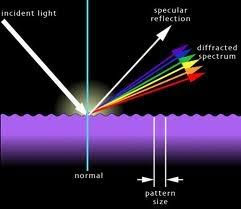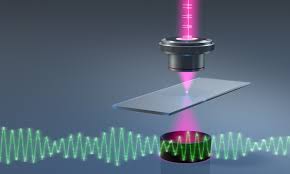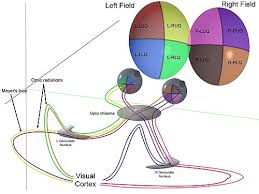About the Research Journal of Optics and Photonics
Research Journal of Optics and Photonics is an Open Access, peer reviewed, international online journal, aims to publish premier papers on all the subordinate areas of progressive research carried on the arena of fundamental and applied optics and photonics. Optics today endures to increase its impression in incredible ways with fast-measured development and technologically challenging applications.
Research Journal of Optics and Photonics focuses on addressing several features pertaining to broad range topics of modern optics and photonics. The publications in this journal reflect the use of both theoretical and experimental techniques oscillating from the vital properties of light to technological innovations.
Topics of interest spans from fundamental research, recent developments to real-world applications of Optics and Photonics technologies that include but not limited to:
- Laser Sciences
- Fiber Optics
- Nanophotonics
- Biophotonics & Bioimaging
- Optoelectronics
- Quantum Optics and Information
- Photonics Materials and Devices
- Spectroscopy
Articles can be submitted in the form of research articles, review, case reports, case study, commentary, letter to editor, mini review, opinion, short communication, book review, editorials etc. Editorial Manager System for quality in peer-review process is used by the journal. The Editorial Manager is an online manuscript submission, review and tracking systems. Review handling is executed by the editorial board members of research journal of optics and photonics or outside experts; at least two independent reviewers agreement monitored by editor approval is necessary for approval of any citable manuscript. Authors may submit manuscripts and track their development through the system, expectantly to publication. Reviewers can load manuscripts and submit their opinions to the editor. Editors can accomplish the whole revise submission/review /publish process.
Submit manuscripts at Online Submission System or an e-mail attachment to the Editorial Office at manuscript@scitechnol.com
Nanophotonics
Nanophotonics or nano-optics is the study of the behavior of sunshine on the millimicron scale, and of the interaction of nanometer-scale objects with lightweight. It’s a branch of optics, optical engineering, applied science, and engineering science. It usually (but not exclusively) involves gilded elements, which might transport and focus lightweight via surface plasmon polaritons. Traditional optical elements, like lenses and microscopes, usually cannot commonly focus lightweight to millimicron (deep subwavelength) scales, due to the optical phenomenon limit (Rayleigh criterion). Still, it's doable to squeeze lightweight into a millimicron scale victimization alternative techniques like, for instance, surface plasmons, localized surface plasmons around nanoscale metal objects, and also the nanoscale apertures and nanoscale sharp tips employed in near-field scanning optical research (NSOM) and photoassisted scanning tunneling research.
Quantum Optics
Theory and experiments to grasp and manage the behavior and interactions of sunshine and matter in terms of quantum physics. The power to govern and use quantum info at intervals these, and other, systems permits the performance of tasks that will be unattainable during a classical context. This analysis space includes quantum scientific discipline, quantum science, quantum cryptography, quantum optical systems, cavity quantum field theory, quantum optomechanics, quantum natural philosophy and quantum state characterization. There’s robust crossover with the Quantum Devices, elements and Systems analysis space.
Laser science
Laser science or optical device physics is a branch of optics that describes the idea of lasers. Optical device science is mainly involved with quantum physics, optical device construction, optical cavity style, the physics of manufacturing a population inversion in optical device media, and therefore the temporal evolution of the sunshine field within the optical device. It’s conjointly involved with the physics of light beam propagation, notably the physics of Gaussian beams, with optical device applications, and with associated fields like nonlinear optics and quantum optics.
Fiber optics
Fiber optics refers to the technology related to the transmission of data as light-weight pulses on a glass or plastic strand or fiber. A fiber optic cable will contain a varied variety of those glass fibers from many up to a few hundred. Encompassing the optical fiber core is another glass layer known as facing. A layer referred to as a buffer tube protects the facing, and a jacket layer acts because the final protecting layer for the individual strand. Fiber optics (optical fibers) is long, skinny strands of terribly pure glass concerning the diameter of a personality's hair. They’re organized in bundles known as optical cables and transmit light-weight signals over long distances.
Optoelectronics
Optoelectronics relies on the quantum mechanical effects of sunshine on electronic materials, particularly semiconductors, typically within the presence of electrical fields.
Fast Editorial Execution and Review Process (FEE-Review Process):
Research Journal of Optics and Photonics is participating in the Fast Editorial Execution and Review Process (FEE-Review Process) with an additional prepayment of $99 apart from the regular article processing fee. Fast Editorial Execution and Review Process is a special service for the article that enables it to get a faster response in the pre-review stage from the handling editor as well as a review from the reviewer. An author can get a faster response of pre-review maximum in 3 days since submission, and a review process by the reviewer maximum in 5 days, followed by revision/publication in 2 days. If the article gets notified for revision by the handling editor, then it will take another 5 days for external review by the previous reviewer or alternative reviewer.
Acceptance of manuscripts is driven entirely by handling editorial team considerations and independent peer-review, ensuring the highest standards are maintained no matter the route to regular peer-reviewed publication or a fast editorial review process. The handling editor and the article contributor are responsible for adhering to scientific standards. The article FEE-Review process of $99 will not be refunded even if the article is rejected or withdrawn for publication.
The corresponding author or institution/organization is responsible for making the manuscript FEE-Review Process payment. The additional FEE-Review Process payment covers the fast review processing and quick editorial decisions, and regular article publication covers the preparation in various formats for online publication, securing full-text inclusion in a number of permanent archives like HTML, XML, and PDF, and feeding to different indexing agencies.
 Spanish
Spanish  Chinese
Chinese  Russian
Russian  German
German  French
French  Japanese
Japanese  Portuguese
Portuguese  Hindi
Hindi 




